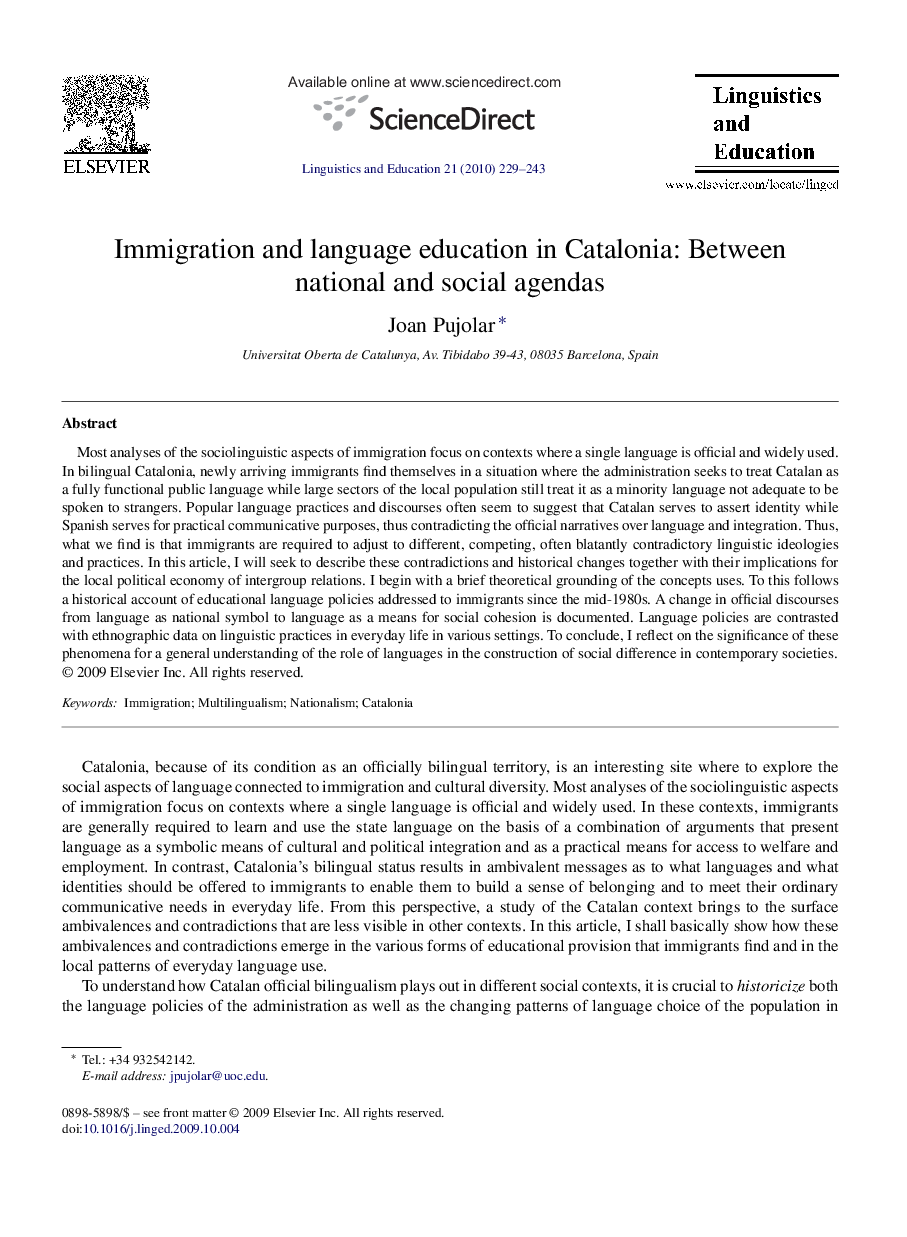| Article ID | Journal | Published Year | Pages | File Type |
|---|---|---|---|---|
| 366469 | Linguistics and Education | 2010 | 15 Pages |
Most analyses of the sociolinguistic aspects of immigration focus on contexts where a single language is official and widely used. In bilingual Catalonia, newly arriving immigrants find themselves in a situation where the administration seeks to treat Catalan as a fully functional public language while large sectors of the local population still treat it as a minority language not adequate to be spoken to strangers. Popular language practices and discourses often seem to suggest that Catalan serves to assert identity while Spanish serves for practical communicative purposes, thus contradicting the official narratives over language and integration. Thus, what we find is that immigrants are required to adjust to different, competing, often blatantly contradictory linguistic ideologies and practices. In this article, I will seek to describe these contradictions and historical changes together with their implications for the local political economy of intergroup relations. I begin with a brief theoretical grounding of the concepts uses. To this follows a historical account of educational language policies addressed to immigrants since the mid-1980s. A change in official discourses from language as national symbol to language as a means for social cohesion is documented. Language policies are contrasted with ethnographic data on linguistic practices in everyday life in various settings. To conclude, I reflect on the significance of these phenomena for a general understanding of the role of languages in the construction of social difference in contemporary societies.
